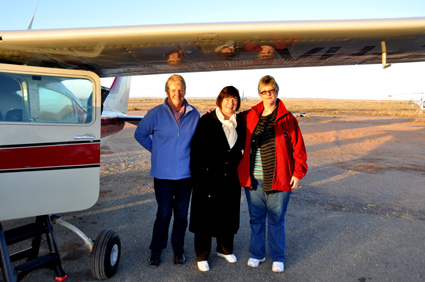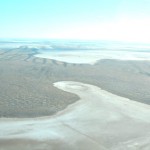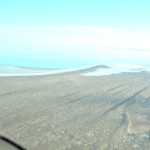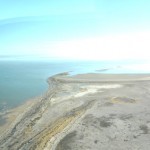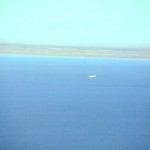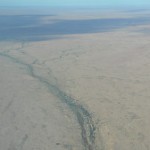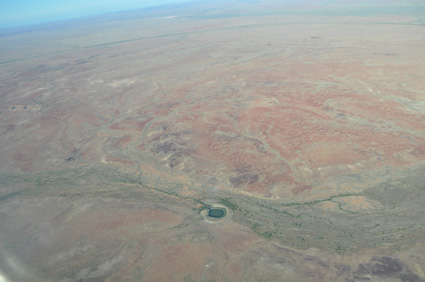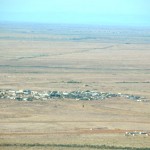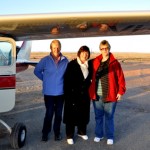Centenarian Margot Bates a winner in pool and living well
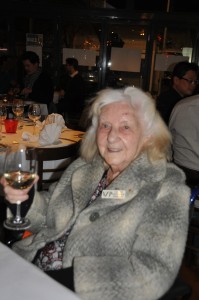 Real men do eat steak if the gender imbalance in Buenos Aires Brasserie this week is any indicator. There were 20 men to just 6 women diners tucking into an array of steak and whole baby goat legs, the restaurant’s main claim to fame.
Real men do eat steak if the gender imbalance in Buenos Aires Brasserie this week is any indicator. There were 20 men to just 6 women diners tucking into an array of steak and whole baby goat legs, the restaurant’s main claim to fame.
However, one of those six women sat alone in a wheelchair close to the door creating something of a mystery until we were about to pay the bill when the restauranteur Julia Messinger called us all to attention. “I’d like you to meet “Dame’ Margot Bates,’’ she said. “She is our most faithful customer.’’ And she proceeded to tell us that Margot Bates was 100 years and six months old and that each evening, one of the staff collected her from around the corner to dine in the restaurant.
“I come here every night for dinner; they are like family to me,’’ said Margot of Julia and husband Norberto Spagnolo’s conviviality.
Margot is actually a swimming celebrity at the Masters Games and discards her wheelchair to win gold medals in the pool. “I will be swimming in the Masters Games the first week in October,’’ said Margot, after she had given the diners a right royal wave. “I have 194 gold medals for swimming and I hope to make it 200.’’ “I only began to swim at the age of 87.’’
Despite wearing a visual impairment badge, she told how she still visited nursing homes “to entertain the elderly’’. “I entertain the elderly in the nursing homes and I am older than most of them,’’ she said. But first, she implements her “smiles program’’. “They will be sitting there with long faces and I tell them that when they all smile, I will begin.’’
In the year 2000, Margot received an OAM for services to the community and achievements in the Masters Games. And she proudly told how The Advertiser will meet her at the Marion Swimming Centre for publicity shots. “They want photographs of me in my swimming costume next Monday morning,’’ she said proudly. “Here’s to us good women…we are scarce. ‘I have my own website you know.’’
Her life has been blighted by terrible grief last year when her only son, aged 69, died in Paris a year ago. “He flew to Paris and telephoned me on the evening he arrived that he had arrived safely, and the next morning he was dead,’’ she said. Tears filled her eyes. However, her husband, Bob is still alive, but suffering dementia in a nursing home. “I am 100 and he is 95 and we have been married for 58 years.
Although her eyesight is fading, her mind is as sharp and her conversation is spirited. Whatever is the secret of her longevity and quality of life at her age? “I think it is just enjoying each day as it comes. In this life two things stand like stone – kindness in another’s trouble, courage in your own,’’ she recited.
PS: On Tuesday, June 28, Margot was a page one girl in The Advertiser in her swimsuit.
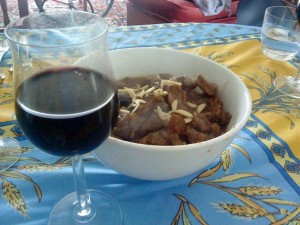 Pumpkin soup has never tasted so good with a touch of t urnip, thanks to the great French chef, Auguste Escoffier. The recipe book 2000 Favourite French Recipes was his final gift to French housewives and is translated in English. First published as Ma Cuisine in 1965, ingredients are given in pounds and ounces, which calls for creative input as my scales are now metric only.
Pumpkin soup has never tasted so good with a touch of t urnip, thanks to the great French chef, Auguste Escoffier. The recipe book 2000 Favourite French Recipes was his final gift to French housewives and is translated in English. First published as Ma Cuisine in 1965, ingredients are given in pounds and ounces, which calls for creative input as my scales are now metric only.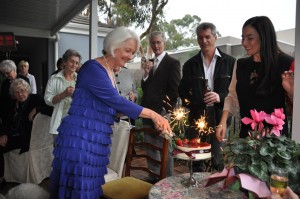 Best friend Jenny turns 70 today and threw her own elegant afternoon tea for 70 guests at her home yesterday. Jenny has always loved beautiful things and her home was so pretty and colourful with floral decorations that I thought I would share them with you as a wonderful statement of style. Despite the bitter cold and light drizzle, large heaters warmed the patio here we were served champagne and delicious finger savouries which would rival a Royal garden party. Jenny and her daughter,
Best friend Jenny turns 70 today and threw her own elegant afternoon tea for 70 guests at her home yesterday. Jenny has always loved beautiful things and her home was so pretty and colourful with floral decorations that I thought I would share them with you as a wonderful statement of style. Despite the bitter cold and light drizzle, large heaters warmed the patio here we were served champagne and delicious finger savouries which would rival a Royal garden party. Jenny and her daughter,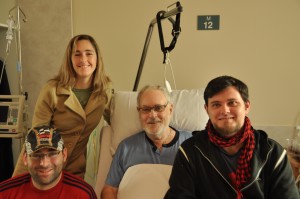
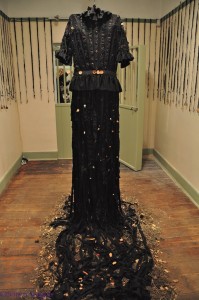 It is ironic that poet and actor Michelle Murray stands in an historic witness box at the South Coast Regional ArtsCentre – once the Goolwa court house, to spin her mythical story of The Black Wedding Dress.
It is ironic that poet and actor Michelle Murray stands in an historic witness box at the South Coast Regional ArtsCentre – once the Goolwa court house, to spin her mythical story of The Black Wedding Dress.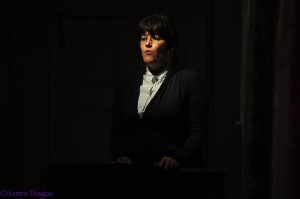 souls carry notions of the deep spirituality of Clarissa Pinkola Estes’ tome, Women Who Run With the Wolves. One is left wondering of her own life and if she married in a black wedding: “There are lots and lots of personal references woven through the story,’’ she admits.
souls carry notions of the deep spirituality of Clarissa Pinkola Estes’ tome, Women Who Run With the Wolves. One is left wondering of her own life and if she married in a black wedding: “There are lots and lots of personal references woven through the story,’’ she admits.